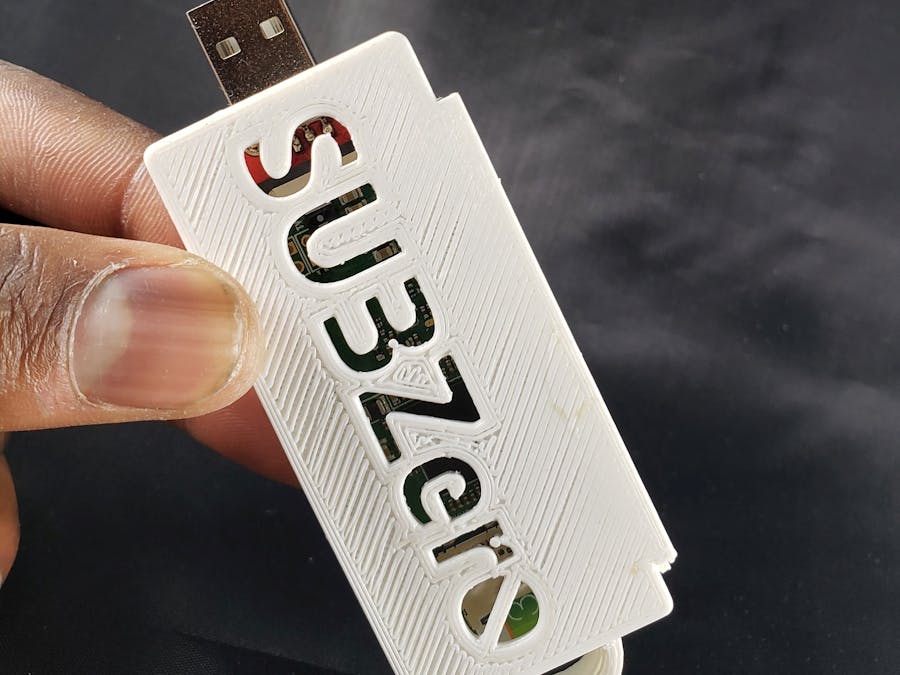Quite often I find myself on the go, in need of storing/sharing files locally with others without an accessible internet connection. Even with an internet connection, I find myself wanting to keep most of my file sharing local, to prevent storing sensitive data in the cloud (Infamous Cloud Security Breaches).
For example, I, like many other DIYers, have spent wayyyyy too much money on a fleet of 3D printers. The process of either downloading prototype designs onto a USB and inserting it into each of my printers is tons of work, and its much easier to have a secure place on an isolated network for my printers to automatically look for files to print.
To fix this problem I partnered with cyber-security researcher Josiah @ Halcy0nic to create SUBZero (Secure USB Backup Zero), a simple DIY wireless USB NAS (Network Attached Storage) that enables you to securely upload files on the go using a $10 Raspberry Pi Zero W! NAS is a low cost, convenient way to backup files, photos, and data for future use. The SUBZero was not intended to replace traditional USBs but offers features that you wouldn't typically find on a COTS USB.
- Wireless NAS
- Access Point with configurable WPA2 authentication
- Full TCP/IP on the local SUBZero network
- Can act as a wireless router, but can also be used completely offline
- IP masquerading
- Removable/replaceable SD card. This allows you to buy either a large or small SD card depending on your own needs.
- Easy to use HTTPS file server
- Built with a $10.00 Raspberry Pi Zero W running Raspbian Stretch Lite. This fares better than a traditional USB in some cases because the SUBZero is also a fully functional computer.
- Can be run/powered by your phone using a USB to USB-C/Lightning/Micro-USB/etc adapter.
Just plug in the SUBZero to a USB port and it will broadcast a WiFi network named SUBZero (the default password is raspberry for WiFi, and pi:raspberry for the OS. PLEASE change this once it's up and running). Once connected to the network, you can browse to https://192.168.1.1 and start uploading/sharing files. This functions as a standalone network, meaning no Internet connection required!
The easiest way to get up and running with the SUBZero is by grabbing SUBZero.tar.bz2 image and flashing it onto an SD card. I recommend using Ethcher for flashing the SD card. Etcher is easy to use and works on Windows, OSX, and Linux.
Installing from sourceTo install the SUBZero on your Raspberry Pi Zero W, clone the SUBZero repository from GitHub and run the install script.
git clone https://github.com/Halcy0nic/SUBZero.git
cd ./SUBZero$ sudo chmod +x install.sh && sudo ./install.sh
During the installation, you will be prompted to enter data for the self-signed certificate. You can simply enter a ‘.’ or dummy data for all of the fields when generating the cert. Once you have installed the SUBZero, reboot the machine and you should see a WiFi Access Point named ‘SUBZero’ that you can connect to. Once connected to the SUBZero wireless network you can browse to https://192.168.1.1 and start uploading files.
NOTE: Your browser might complain about the cert being invalid (because it’s self-signed). Proceed to the webpage anyway and add an exception if necessary.
RoutingBy default, the SUBZero is not configured to route any traffic or provide internet access. Configuring the device to route traffic on the network is pretty simple though. I found a tutorial by Phil Martin showing how to do this. First, log in to the SUBZero using the credentials ‘pi:raspberry’ (you should change this) and open /etc/sysctl.conf as sudo with vim/vi/nano.
Uncomment the line containing ‘net.ipv4.ip_forward=1’ by removing the # from the beginning of the line, save the changes, and return to the terminal.
Assuming you are using wlan0 for your WiFi interface and eth0 for your internet connection, execute the following commands on the terminal:
sudo iptables -t nat -A POSTROUTING -o eth0 -j MASQUERADE
sudo iptables -A FORWARD -i eth0 -o wlan0 -m state --state RELATED,ESTABLISHED -j ACCEPT
sudo iptables -A FORWARD -i wlan0 -o eth0 -j ACCEPT
sudo sh -c "iptables-save > /etc/iptables.ipv4.nat"
Lastly open the file /etc/rc.local as sudo and add the following line at the bottom, right above exit 0:
iptables-restore < /etc/iptables.ipv4.nat
By default, the Raspbian root file system is around 2GB. However, if you have an SD card with more capacity it's a great idea to go ahead and expand your installation to the entire SD card. This way you can have the maximum amount of file storage on your SUBZero device.
To expand to the filesystem boot up the SUBZero device and open up a terminal and execute the following command
sudo raspi-config
You will be presented with a GUI menu, go ahead and go down to "Advanced Options" and hit enter.
Then at the second menu hit enter on "Expand Filesystem". You will them be prompted to restart your machine after the operation is over. Then your done with the software side of things.
HARDWAREThe hardware install is actually incredibly easy. All you are going to need is the 3D-printed case, a Raspberry Pi Zero, and a USB Pi Stem.Before starting the soldering go ahead and print out the case for the SUBZero here.Then follow the Zero Stem instructions on how to solder the Zero Stem to the Pi Zero.
Then in order for it to fit inside the SUBZero case, remove the plastic screws
Place Inside the SUBZero in the case, close it up and call it a day.
That's it! You're finished. Quick reminder on how to use the SUBZero:
Just plug in the SUBZero to a USB port and it will broadcast a WiFi network named SUBZero (the default password is raspberry for WiFi, and pi:raspberry for the OS. PLEASE change this once it's up and running). Once connected to the network, you can browse to https://192.168.1.1 and start uploading/sharing files.
For all the latest updates and SUBZero news check out Halcy0nic's GitHub. Also make sure to check out his personal blog to see what other cool cyber-security focused projects/tutorials he's in the process of making.











_3u05Tpwasz.png?auto=compress%2Cformat&w=40&h=40&fit=fillmax&bg=fff&dpr=2)
Comments
Please log in or sign up to comment.